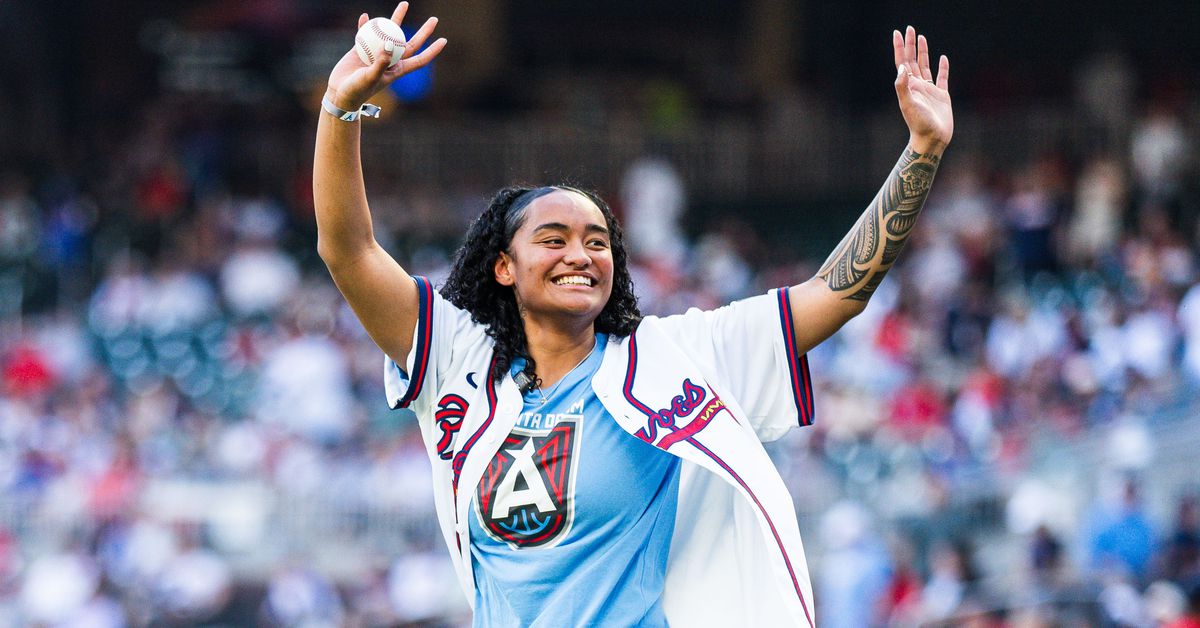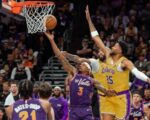The Atlanta Dream are beginning a grand experiment.
They hired Karl Smesko as head coach, an offensive innovator known for the “shoot first, shoot second and shoot third” 3-point-centric attack he established at Florida Gulf Coast (FGCU). And yet, the organization then signed two elite—albeit shooting limited—bigs during the WNBA’s free agency period: all-timer Brittney Griner and All-Star Brionna Jones.
How will Griner and Jones, the independent variables in this experiment, effect the operation of Smesko’s offensive system? Can they elevate the dependent variables—the Dream’s core of Rhyne Howard, Allisha Gray and Jordin Canada—to new heights? Could it all devolve into a reactive, explosive mess?
In the 2025 WNBA Draft, however, the Dream did not add players who will disrupt their experiment. Instead, with South Carolina’s Te-Hina Paopao dropping to the team at the No. 18 overall pick, they found a controlled variable, a constant who can be counted on regardless what else happens.
Te-Hina Paopao looks straight up REGAL in her Samoan attire for draft night
Paopao was selected with the 18th pick of the WNBA draft to the Atlanta Dream in front of family and friends ❤️ pic.twitter.com/q2pbt4zCrl
— espnW (@espnW) April 15, 2025
For an Atlanta squad ushering in changes that come with great promise but also looming chaos, Paopao is perfect, possessing a skill set that will suit whatever permutations the Dream take, both in 2025 and beyond. Here’s why:
She’s a shooter, but not just a shooter
Paopao’s shooting, obviously, makes her an appealing fit for Atlanta, which owned the second-worst 3-point shooting percentage in 2024. Across five college seasons, three at Oregon and two at South Carolina, she shot 40 percent from 3 on almost five attempts per game. Her junior year, her first as a Gamecock, was her most sterling season, when she shot a Division I-best 46.8 percent from downtown.
Shooter’s touch, point guard vision
Te-Hina Paopao led all of Division I in 3PT percentage (46.8%) in her first season at South Carolina. A finalist for the Nancy Lieberman Award, she helped the Gamecocks win a national title in 2024 and return to the championship game in… pic.twitter.com/5wj38znQre
— WNBA (@WNBA) April 11, 2025
Those numbers should sustain in the W, even with the increased speed and physicality of the league. For one, even as Paopao did not aggressively hunt 3s, she had to take a fair share of difficult pull-up 3s. For the Dream, she’ll often be spotting up behind the arc, spacing the floor for the likes or Howard and Gray and receiving open opportunities to fire away when opponents divert extra attention towards the Dream’s perimeter stars, as well as to Griner. Griner’s proficiency passing out of double teams, in particular, could result in fruitful opportunities for Paopao.
However, Atlanta should continue to empower Paopao’s pull-up shooting, as it is her ability to drain triples off-the-bounce that makes her truly elite, distinguishing her from 3-point markswomen whose repertoire is limited to stationary, catch-and-shoot attempts. It is this ability that takes her ceiling from “a good role player” to a “star in her role,” with a smidge of All-Star upside. Her size also makes such a ceiling conceivable. Although not a big guard at 5-foot-9, she is bigger than most players of her archetype, especially among her fellow 2025 rookies. While Georgia Amoore, selected No. 6 overall by the Washington Mystics, and Hailey Van Lith, nabbed at No. 11 by the Chicago Sky, may have spicier, saucier highlight reels, they stand at 5-foot-6 and 5-foot-7, respectively, and are sketchier shooters. Paopao’s extra inches, combined with her speedy shooting motion, make her path to effective, efficient offensive basketball smoother—and could result in her outplaying higher-drafted rookie guards.
And when she doesn’t shoot, Paopao can still make a positive offensive impact with her ability to attack close outs, a skill she sharpened during her final college season. While finishing at the hoop could prove challenging, she can dime up teammates off such drives due to her comfort and confidence with the ball in her hands.
As Smesko said of his newest rookie, “Paopao is more than a shooter, she competes on the defensive end, she can handle the ball, she’s somebody under pressure situations is able to stay calm.”
She comes from the Dawn Staley school of defense
Turning to Paopao’s defense, it’s not the reason she’s in the WNBA, but certainly will not prevent her from succeeding the league. To borrow Smesko’s words, she “competes on the defensive end”—and that’s because she played for Dawn Staley, the South Carolina head coach who demands nothing less of her players.
In South Carolina’s starting lineup, she was the weakest defensive player, and thus most likely to be targeted by opposing offenses. But more often than not, she was an effective cog, doing her job as she was surrounded by superior defenders. The situation will be similar with the Dream, where Canada is a premier perimeter pest, Gray is as gritty as they come, Howard can be dominant when dialed in and Griner and Jones combine to offer rim protection and low-post resistance. This infrastructure not only will protect Paopao, but also allow her to gamble to generate deflections and steals, just as she did for the Gamecocks.
Additionally, Paopao’s South Carolina schooling, which featured back-to-back runs to the national championship game, prepared her to play in high-pressure situations—remain calm in such circumstances. The WNBA lights will not be too bright for her, which should further contribute to her readiness to play right away.
Shooting versatility. Composed playmaking. Defensive competitiveness.
Those are skills that can enhance any team, including—and maybe especially—the squad that the 2025 Dream hope to be. But, if Atlanta’s experiment blows up, resulting in significant changes (or if the new CBA brings significant changes, regardless of what happens on the court in 2025), expect Paopao to remain a constant.


